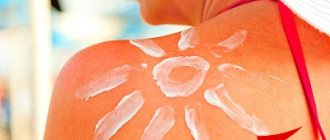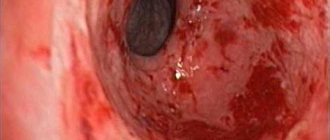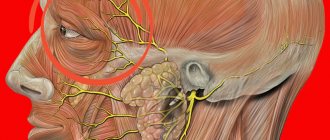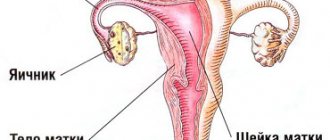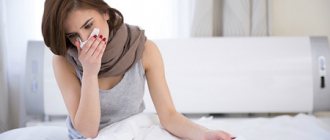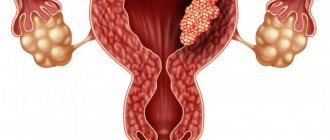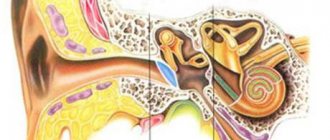Infantile pruritus is popularly known as urticaria, but in the medical field it is called strophulus or prurigo. This disease most often occurs in children aged from several months to 4–5 years and causes a lot of trouble for the child and his parents.
Infantile prurigo usually appears before age 5
What is infant prurigo?
Infantile pruritus is a disease that affects the baby’s skin and manifests itself in the form of papules and itching. The location of the rash most often is the flexion areas of the joints on the limbs and the skin of the face, but in severe cases of the disease, pimples can spread throughout the body.
The size of the papules can vary between 0.2–1 cm. On some papules, bubbles with liquid form, which eventually become covered with crusts. Damage to such crusts is accompanied by painful sensations.
The disease is characterized by frequent changes of remissions and relapses, which is most often associated with changes in the baby’s diet. In medical practice, there are cases when, upon reaching puberty, the disease ceases to manifest itself, but there is also a high probability of childhood pruritus transitioning into adult pruritus.
Prurigo (prurigo) in adults
Depending on the gender, age and living conditions of the patient, several forms of the disease can be distinguished.
Simple prurigo
The disease most often affects women after 30 years of age. It is characterized by a skin rash, mainly on the arms and legs, less often on the torso. Condensed papules have a pink or brown tint. In shape they resemble a hemisphere with a diameter of 2 to 5 mm. Skin rashes do not merge with each other. Bloody crusts appear at the scratching sites. After healing, scars or pigmented areas remain in their place.
The onset of the disease is characterized by deterioration within 1-2 days. The symptom is accompanied by itching, sleep disturbance, and irritability.
The acute period of the disease lasts up to 4 months. In the chronic course of the pathology, new papules form at the sites of previous rashes, and the disease becomes paroxysmal in nature.
Pathology in pregnant women
Prurigo in pregnant women occurs due to an imbalance of humoral (extracellular) and cellular immunity, with the former predominant. Since the sensitivity of skin cells in women carrying a child is much higher, this fact provokes the appearance of a rash on the limbs and abdomen.
Statistics show that the disease occurs in 0.3% of pregnant women, mainly in the 3rd trimester. If the pathology is not treated, itchy rashes spread to the face and buttocks.
The disease is not dangerous for the child, but causes great discomfort to the mother. Prurigo can cause depression and nervous breakdowns.
Summer and winter prurigo
Seasonal prurigo is associated with the adverse effects of external factors. In summer, a rash in the form of nodular formations occurs on open areas of the body exposed to ultraviolet radiation and insect bites.
Plaques on the skin thicken, become darker, and gradually merge. With regular exacerbation of prurigo, the deep layers of the skin are damaged and scars form.
Winter pruritus occurs predominantly among males. The rash is localized on the extremities, the pathology becomes chronic and worsens with increasing cold weather.
Senile prurigo
This type of disease has another name - senile idiopathic itching. The pathology occurs in 50% of people over 70 years of age. The disease proceeds in paroxysms. Itching occurs mainly at night.
Senile prurigo often occurs against the background of existing skin diseases (seborrheic dermatitis, eczema, scabies), as well as pathologies of internal organs (dysfunction of the gallbladder, anemia, renal failure and others).
Nervous prurigo
The disease manifests itself against a background of stress and nervous disorders. This type of prurigo is characterized not so much by a rash, but by severe itching, as a result of which deep scratch marks are formed. Itching intensifies against the background of depression, anxiety, frequent psychological trauma and is disturbing mainly at night.
Nervous pruritus can occur against the background of diseases of the central nervous system:
- brain tumors;
- paresthesia (impaired sensitivity, manifested in a burning sensation, tingling);
- sclerosis.
Nodular prurigo
Nodular prurigo, or Hyde's prurigo, is a rare form of pathology that primarily affects women over 40 years of age. The disease occurs against the background of metabolic disorders, diseases of the endocrine system, immune disorders, allergies, and nervous disorders.
The first symptom of the disease that makes itself felt is severe itching. It periodically disappears and reappears several times a day. A little later, a rash appears on the skin. It consists of hemispherical papules and nodules with a diameter of 5 mm to 3 cm.
The rashes are concentrated on the extensor surfaces of the extremities and on the back. At first they acquire a flesh-colored or pink tint, then turn red or blue. Scales and wart-shaped lesions appear on the surface of the papules. Regular scratching leads to the formation of bloody crusts.
Causes of the disease
Strophulus in children appears as a result of increased sensitivity of the body to certain types of foods. Allergies to food may begin to appear during the period of introducing complementary feeding to the baby. The disease can be caused by nuts, raspberries, fish, chicken, citrus fruits, and any foods containing protein. In children during breastfeeding, an allergic reaction can be triggered by a protein that enters the child's body along with mother's milk.
This disease may begin to develop against the background of diathesis or similar pathologies, the presence of which indicates the child’s tendency to allergic reactions. This tendency can be hereditary and transmitted at the genetic level.
Chicken meat and citrus fruits often provoke allergies
Nutrition for pruritus
Doctors believe that an important point in the treatment of the disease in question is nutrition - it should be balanced and fortified.
If pruritus is diagnosed in small children who are given complementary foods in the form of vegetable purees, then before feeding they must be given 1-2 teaspoons of expressed breast milk (even if the child is no longer breastfed). This will help reduce the body's sensitivity to complementary foods.
The diet of an adult patient should consist of vegetables and fruits, fish and dairy products. In principle, there are no strict restrictions on food, but you must adhere to the following rules:
- limit the amount of salt consumed, and preferably avoid it altogether;
- It is better to replace animal fats with sunflower oil;
- give up foods rich in carbohydrates - baked goods, pasta, potatoes;
- give preference to low-fat foods, steamed or baked foods.
Prurigo is a rather unpleasant disease that not only changes a person’s appearance, but also has a direct impact on the psycho-emotional background and rhythm of life. Only competent treatment and compliance with all the recommendations of the attending physician will completely get rid of this pathology.
Tsygankova Yana Aleksandrovna, medical observer, therapist of the highest qualification category
26, total, today
( 66 votes, average: 4.73 out of 5)
Keratoacanthoma of the skin: symptoms at the initial stage, diagnosis and treatment
Ichthyosis vulgaris - “scaly skin”: symptoms and treatment
Related Posts
How does it manifest in children?
Prurigo often affects a child’s body, which is weakened by other diseases of a non-allergic nature. These diseases include liver failure. As a result of poor liver function, toxins are not completely eliminated from the body, and intoxication of the body occurs, which is a favorable condition for the development of childhood pruritus.
The impetus for the development of strophulus can be given by helminthic infestation. Harmful substances that appear in a child’s body as a result of the vital activity of helminths can cause allergization and intoxication.
Some doctors believe that prurigo can be caused by the bites of flies, mosquitoes, or other insects.
The reasons that can provoke infant pruritus are:
- disturbances in the gastrointestinal tract or biliary tract,
- dysbacteriosis,
- neurological problems,
- diabetes,
- oncological neoplasms.
Symptoms of infant pruritus
The first signs of the disease can appear quite quickly. The child’s skin begins to become covered with pimples up to 1 cm in diameter. After some time, bubbles with liquid form on them. After 10-12 hours, the liquid in the bubbles dries up, and the bubbles themselves disappear, but a crust forms in their place. At the initial stage of the disease, a rash appears on the face and flexion of joints.
Skin rashes are accompanied by a symptom in the form of severe itching, which constantly worries the baby, because of this he sleeps poorly and constantly scratches the affected areas. The child becomes capricious, irritable, often cries, and refuses to eat. The disease can cause an increase in body temperature to 38° and enlargement of the lymph nodes.
If childhood pruritus is at an early stage, then its symptoms begin to subside after eliminating the allergen from the baby’s diet. But if a child consumes prohibited foods and overeats, then the symptoms of the disease become more pronounced.
Fever often accompanies the development of prurigo
Symptoms of the disease
The main symptom of the disease is severe itching, which is characterized by paroxysmal manifestations. , various rashes form on the skin The diameter of each speck ranges from 0.5 to 10 mm. This disease is not infectious in nature, and therefore does not pose a danger to people around the patient.
Prurigo in adults most often manifests itself as hemispherical papules that occur on the forearms, back, buttocks, armpits and abdomen.
The formation of a skin rash is always accompanied by severe itching. Most often, the formations grow up to 5 cm, covered with a purulent top or hemorrhagic crust. The color can range from bright red to wine. Localization of the rash on the extremities leads to inflammation of the femoral, axillary and ulnar lymph nodes.
The formation of rashes in children begins with numerous small nodules that constantly itch and provoke scratching. Due to constant mechanical damage, the epidermis begins to thicken, and the affected areas of the body feel like a hard grater to the touch. After some time, papules begin to form. But a rapid form of prurigo can also be observed, which is characterized by rashes that quickly turn into small blisters, and then merge again and become covered with pink crusts . They reach a diameter of up to 10 mm.
Most often, the rash appears on the outside of the forearms, legs, thighs, abdomen and buttocks. Less commonly, it is localized on the palms and soles. The child suffers greatly from painful scratching and itching, all of which provokes nervousness, increased excitability, insomnia and poor appetite.
Complications
This disease is not as harmless as it might seem. Lack of treatment for childhood pruritus and non-compliance with doctor’s recommendations can cause the following complications:
- Constantly scratching itchy areas can lead to injury to the skin and infection, which causes the appearance of ulcers.
- The affected areas of the skin thicken, become rough and have a gray tint.
- The disease can cause swelling of the lymph nodes and their enlargement.
- If the hives have spread to the scalp, the child may begin to lose hair.
The disease can progress to atopic dermatitis or adult prurigo.
Diagnosis of the disease
It is not recommended to diagnose the disease yourself, as there is a high probability of confusing childhood pruritus with another disease that is accompanied by similar symptoms. Diagnosis and treatment of this disease should be carried out by a qualified dermatologist.
To make a diagnosis, the doctor needs to examine the child’s skin and clarify the symptoms that are bothering him. To accurately determine prurigo, the doctor must exclude diseases with similar symptoms. This is done by determining the characteristics of the location of the rashes and their location.
After the examination, the doctor prescribes dermatoscopy using a special device. A dermatoscope allows the doctor to examine the affected area of skin under multiple magnification. This technique has no contraindications and is completely painless. It is also necessary to take a test to check the level of histamine in the blood.
If concomitant infections are suspected, the child may be prescribed a scraping test from the affected area of the skin. This diagnostic method makes it possible to determine the type of pathogen and its susceptibility to medications.
If the child has concomitant diseases, the following tests are additionally prescribed:
- If you suspect a helminthic infestation, you must have your stool analyzed for the presence of parasite eggs.
- Take a stool test for dysbacteriosis.
- If a child has liver problems, then it is necessary to donate blood for liver tests and do an ultrasound.
For a correct diagnosis, it is necessary to take a test for worms.
Prurigo - all about the disease
In medical practice, there is a pathology of a dermatological nature, which manifests itself in the form of rashes.
It also has two names: prurigo or, more commonly, prurigo. It can appear on all parts of the body. As a rule, the disease appears in the form of erosions and blisters. The size of one sore can reach 16 mm. The most important symptom of the disease is unbearable itching. Specifics apply to certain age categories. These include children from birth to 5 years of age, as well as adults who reach 50 years of age and older.
General information about pathology
The disease has several types: nodular, childhood, adult. Like all diseases, prurigo has quite pronounced symptoms. The most important task is when the first signs appear, such as unbearable itching, purulent rashes, and the appearance of bloody crusts in places where purulent blisters have been scratched.
It is very important to know whether this pathology is infectious or not. And how it is transmitted. Pathology spoils the appearance. Therefore, everyone tries to turn away from a person who suffers from this disease. But, as it turned out, it is completely safe for others. And it is not transmitted by airborne droplets or during close contact.
Causes of prurigo
The main question of why the disease manifests itself worries many patients. The cause, as a rule, is increased irritability of the body to external factors. As a result, allergic irritation appears on the skin. For each return category there are certain stimuli.
In children under 1 year of age:
- protein found in breast milk;
- cow's milk protein.
In older children (from 1 to 5 years), the disease is most often provoked by the following factors:
- strawberry;
- eggs;
- chocolate;
- bakery products;
- mushrooms;
- certain types of fish.
Adults typically suffer from eating the following foods:
- alcohol;
- spices;
- honey;
- spicy, fried foods;
- smoked meats.
Also, thanks to the research, experts have identified a number of factors that can provoke the manifestation of the disease:
- against the background of nervous experiences;
- allergic sensitivity, which is transmitted at the genetic level;
- gallbladder dysfunction;
- helminthic infestations;
- chronic hepatitis;
- disturbance of sound sleep;
- kidney dysfunction;
- lymphogranulomatosis;
- the appearance of benign and malignant neoplasms in the body.
Some scientists who have worked with this problem have found that there are cases when the pathology appears as a seasonal allergy.
Such cases have mainly been reported in patients who live in rural areas. It is also possible that the disease may manifest itself after bites from ticks, mosquitoes, fleas and other insects.
The disease is not as dangerous in its chronic form as hemorrhoids; in its acute form it causes great discomfort, and you need to do exercises; a complete list of exercises for hemorrhoids is described by our friends on the website stomach-info.ru.
Varieties
In modern medicine, dermatologists have identified 3 main groups of this pathology from medical practice:
- infantile pruritus – called papular urticaria;
- in adults – prurigo beignets;
- nodular prurigo is called gida prurigo.
There are also two special forms:
- senile pruritus;
- solar.
The first form is found in people who have crossed the threshold of seventy. She usually conquers the male part of the population. It makes itself felt at night and goes away in the form of attacks.
It is very difficult to diagnose, and it is almost impossible to treat. Most often it occurs due to increased dryness of the skin. The senile form of the disease can manifest itself as eczema, seborrheic dermatitis or scabies.
In most cases, the causes of the disease cannot be determined.
The solar form of the disease, in most cases, manifests itself in the summer. Its main symptom is rashes on exposed skin.
The rashes can be located at a short distance from each other and, as a result, can merge into one.
In such areas, the skin thickens, as a result, plaques form and pigment spots form in places where the crusts fall off.
Manifestation in adults
Beignet prurigo manifests itself as rashes that are nodular in nature. Rashes usually appear in the area:
- backs;
- belly;
- in places of flexion and extension of all limbs.
It is important to note that this form of the disease does not appear in the facial area. The size of the ulcers can reach 5–8 mm. They become covered with red or brown blood crusts. With the appearance of crusts on the body, patients begin to complain of severe itching.
The disease can be divided into two groups: chronic and acute. The chronic form gives symptoms such as constant severe itching and numerous defects on the skin of a cosmetic nature.
This disease can lead to disturbances in the nervous system, sudden mood swings, and possible depression.
When adult pruritus appears, treatment should begin as soon as possible.
Otherwise, complications may arise, such as:
- folliculitis;
- furunculosis;
- pyoderma;
- ostiofolliculitis.
A pathology such as prurigo in adults requires complex therapy.
Most often used:
- medicines that relieve itching and remove the underlying effects of an allergic reaction (Cetrin, Fenkarol, Suprastin, Tavegin, Kestin);
- pharmacological products that help relieve nervous tension, these can be either injections (Novocaine 2%, administered intramuscularly once every 2 days, 5 ml) or tablets (Novopasit, Valerian, Persen);
- If the patient begins to develop erosions, doctors prescribe intensive therapy.
In medical practice, advanced cases of this pathology are often encountered, and then doctors have to resort to extreme measures. And they prescribe hormonal drugs that help quickly combat the problem.
In most cases, the drug used is Prednisolone. The course of treatment can last for 5–7 days, depending on the complexity of the disease. The dosage of the drug per day should not exceed 25 mg.
In case of complications that can result from pruritus in adults, treatment should be done with antibiotics or sulfonamide drugs. During the period of antibiotic use, the body must be strengthened with the help of various vitamin complexes and probiotics.
If the itching becomes unbearable during the period of illness, then the affected areas of the skin are treated using 1 - 2% menthol, 2% phenol or 2 - 4% citrate solution. Each of these drugs has strong antipruritic properties.
How does it manifest in children?
Infantile prurigo can manifest itself in a child from the first days of life until the age of 5–6 years. The first symptoms of the disease are:
- numerous rashes all over the body or in some parts in the form of nodules;
- over time, the rashes can increase in size, reaching 5 – 7 mm in diameter;
- transformation of a normal rash into blisters;
- the resulting blisters burst on their own, as a result, wounds covered with crusts appear;
- the disease affects the face area, flexion-extension areas, soles, torso, palms.
The affected areas cause unbearable itching, especially for a child. It is not recommended to comb them, so you should consult a doctor so that he can prescribe the correct treatment. Among the medicines there will definitely be an ointment or solution that will need to be used to treat erosions.
Pruritus in children, due to severe irritation, can:
- disrupt the child's sleep;
- develop nervousness;
- excitability will increase.
The following factors may indicate the appearance of pathology:
- increased skin dryness;
- anhidrosis;
- lymph nodes enlarged several times in the groin area and on the inner surface of the thigh.
How is pathology treated in children? It must take place under the strict supervision of the doctor who prescribed the treatment. For small children who are breastfed, add up to 10–15 drops of skim milk to their diet; they must be given within 15–20 minutes before feeding.
In such cases, dermatologists strongly advise introducing low-fat kefir and cheese (cottage cheese) into complementary foods much earlier than usual. Children from 1 to 6 years old need a strict diet, in which the majority of the diet consists of milk, kefir, cottage cheese, fermented baked milk, sour cream, cheese, fruits, and vegetables.
The only meat you can eat is beef. It is also worth remembering the presence of sunflower oil, or preferably olive oil.
The course of treatment may include medications such as:
- diazolin;
- desloratodine;
- tavegil;
- clemastine;
- vitamin complex (vitamin A, groups B, C);
- valerian (to relieve nervous tension);
- festal (mezim, for better digestion);
- ointments (creams) that relieve itching and inflammation.
If the case is advanced, doctors resort to extreme measures, prescribing hormonal drugs in minimal doses. This treatment takes place strictly in a hospital.
To save your baby from severe suffering, you can prepare a bath for him with a decoction:
- chamomile;
- sequences;
- oak bark;
- nut leaves;
- bran.
It is very important to eliminate all pathogens during treatment. It is also worth conducting an examination to identify parasites in the body. If they are present, it is worth taking a course of therapy to remove them.
A disease that is nodular in nature
Nodular pruritus, or Gaida as it is also called, manifests itself in female representatives who have reached or crossed the threshold of 40 years. The disease occurs very rarely, but carries with it more than simple complications.
People often suffer with varying degrees of nervous disorders. Stress is considered the most important trigger. Nodular pruritus has its own characteristic signs, first of all it is severe itching. It lasts longer, unlike other types of this disease.
Sometimes occurs due to:
- disruption of the bile ducts;
- damaged liver;
- when the body's metabolism is disrupted.
Hyda prurigo has the same symptoms as beignets. There is only one difference: the diameter of the sore can reach from 5 to 15 mm. Hyde's pruritus and adult prurigo have the same treatment. The most important thing is not to self-medicate, but to turn to specialists for help.
Disease prevention
Pruritus in adults, its treatment takes a lot of effort and money, as in the treatment of the childhood form of the disease, it is worth using preventive measures.
For this you should:
- strengthen the immune system with natural vitamins;
- maintain a daily routine;
- Healthy food;
- if any conflicts arise, try to resolve them peacefully;
- diseases of internal organs must be treated promptly.
It is very important not to eat foods that can cause allergies. This is especially true for pregnant women. Take care of yourself and be healthy!
(3 5,00 of 5) Loading...
Source: https://boleznikogi.com/pochesuxa-vse-pro-bolezn
Treatment of prurigo in children
The treatment of childhood pruritus is based on the use of antihistamines. The treatment regimen is prescribed for each patient individually, and depends on the age of the child and the level of histamine in the blood. Antihistamines of different generations are aimed at blocking histamine and neutralizing the symptoms of the disease.
How to choose medications
Drug therapy includes sedatives. Such remedies have a calming effect on the child, normalize his sleep, reduce the level of irritability and help get rid of headaches. For children, it is recommended to use sedatives that contain natural ingredients that do not cause side effects.
To improve digestion and remove toxins from the body, food enzymes are prescribed. The child is also recommended to take vitamin complexes and immunomodulators, which help fight the disease and reduce the risk of concomitant diseases.
For topical use, ointments and gels are used, which contain corticosteroids and active substances that relieve itching and burning.
Additionally, treatment with physiotherapy is prescribed:
- phonophoresis,
- electrophoresis,
- Ural Federal District,
- electrosleep.
Treatment of childhood prurigo must necessarily take place in combination with the treatment of diseases that have created a favorable background for its development. This will help speed up the recovery process and reduce the risk of relapse.
Electrosleep is used to treat pruritus
Treatment of prurigo with traditional methods
In folk medicine, there are several recipes that will help get rid of the unpleasant symptoms of the disease in question. Of course, you will need to consult with your doctor - after all, treatment of pruritus at any age should be supervised by medical professionals.
The most effective folk remedies for pruritus:
- Yarrow. It can be used to treat pruritus in two ways:
- Pour boiling water over the fresh leaves of the plant, and after 10-15 minutes, squeeze them out and apply them to the affected areas of the skin in the form of lotions;
- take 50 grams of dry yarrow and pour 1 liter of boiling water, leave for 10 minutes and pour the resulting infusion into the bath. After taking a bath with this product, you should not dry yourself (let your body dry), all your underwear needs to be changed.
- Celery. You need to take fresh roots of this vegetable, chop them and pour boiling water in the proportion of 1 tablespoon of raw material per 250 ml of liquid. The resulting mass can be used as a lotion for nodules, or you can combine it with vegetable oil in a ratio of 1:3 and lubricate the affected areas of the skin - this will relieve itching and relieve inflammation.
- Wormwood. Its juice helps get rid of severe itching and redness in the affected areas - you just need to lubricate them with the juice. You can take 1 tablespoon of crushed wormwood herb and pour a glass of boiling water, leave for 2-3 weeks - this remedy will come in handy in the winter season.
- Common burdock. The simplest use is to take a leaf of the plant, dip it in boiling water for 2-3 minutes and apply it to the affected area of the skin, fixing it for 2-3 hours. You can prepare an ointment from a tablespoon of burdock root powder and the same amount of medical Vaseline, and you need to use it after a bath with oak bark decoction.
Additional treatment recommendations
Treatment of childhood pruritus must be combined with proper nutrition. Foods that can cause an allergic reaction should be excluded from the child's diet. It is necessary to avoid overeating in order to reduce the load on the gastrointestinal tract. Infants should be given half a teaspoon of breast milk 10-15 minutes before the main meal to reduce sensitivity to it.
You need to limit your protein intake. The daily protein weight is calculated depending on the age and body weight of the child:
- At the age of up to 3 months, the daily dose is 2 g per 1 kg of weight.
- At the age of 3–6 months – 3 years.
- From 6 months to 4 years of age.
Women during pregnancy and breastfeeding also need to protect themselves from foods that can cause allergies.
Additional treatment methods may include baths with medicinal herbs, but they can only be used on the recommendation of a doctor. Doctors also recommend swimming in sea water as a rehabilitation measure.
Allergens should be avoided during pregnancy
Causes
The reason for the development of prurigo in adults and children is sensitization of the body, that is, its increased sensitivity to irritants . In this case, there is a risk of developing signs of an allergic disease in the dermis. The irritating agent that provokes allergies is mainly food products.
For an infant, this is milk protein. For adults:
- flour products;
- eggs;
- chocolate;
- citrus;
- strawberry;
- smoked meats;
- alcohol;
- spicy foods and spices.
In addition, the following are predisposing factors:
- Nervous ailments (neurasthenia, sleep disturbances).
- Certain diseases (diabetes, pathologies of internal organs, hepatitis, etc.).
In some cases, the disease may occur due to insect bites (ticks, fleas, mosquitoes).
Attention. In rare cases, skin rashes are triggered by sun exposure.
At risk are patients with metabolic disorders and a predisposition to allergies. Therefore, you should carefully select food products.
Prevention
In order to protect a child from prurigo, it is necessary to exclude from his environment all sorts of factors that provoke this disease:
- It is necessary to take the child for a medical examination on time, and if he has any diseases, treat them in time to avoid relapses.
- It is necessary to exclude allergens from the baby’s diet that can enter his body along with complementary foods or breast milk.
- If a child who already eats independently is susceptible to infantile pruritus, you should not only remove allergens from his diet, but also explain what he can eat and what he cannot.
It is necessary to monitor the child’s psychological state and protect him from stressful situations.


